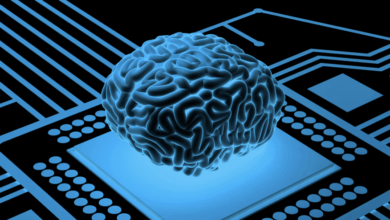
If one were to gauge what the most important technology is both now and in the future, there is a good chance many people would say artificial intelligence, and for good reason. AI technology has many different uses, and its capabilities seemingly evolve by the day as developers find new applications for the technology. This is critical to many different fields, especially the healthcare industry. In recent years, countless developments have revolutionized payer/doctor/patient communications in many ways. And the constantly evolving nature of AI keeps giving practitioners more tools to change the way they care for patients.
With that in mind, here’s a closer look at how AI could be used to help improve the healthcare customer experience.
Increasing accuracy
As AI continues to evolve, developers are continuing to find flaws and bugs that need to be fixed. Current AI models will sometimes confidently state things as if they were facts, despite being entirely made up. This shows why it is dangerous to rely solely on AI technology – especially in healthcare – where patients must be receiving the most accurate information possible. Right now, the human eye is always needed to watch AI and catch and correct mistakes. In the future, however, we’ll likely get to a place where AI could accurately diagnose patients and provide treatment plans, even further revolutionizing the field.
As things currently stand, AI technology can increase accuracy at the very least administratively. AI can help healthcare providers catch errors in medical records and other documentation, improving patient safety and healthcare outcomes. A current example of AI improving administrative work is how multi-modal APIs such as GPT-4 can ingest images and documents, so it could read a large document such as a statement of benefits and quickly determine whether a specific product or service would be covered by insurance and what the patient would be responsible for.
Making care accessible
One of the most crucial ways AI can improve patient care is by providing it for patients who are unable to see a doctor in person, for reasons such as mobility issues, disability, or living in a remote area with no nearby healthcare facility. Patients in these situations can use AI to access important information and advice from the comfort of their homes, at their own convenience. And for patients who do not speak English and would struggle to communicate with a human provider, AI can provide translation services, helping them understand any unclear terminology or instructions.
AI can also present information in ways that are easier for patients and providers to understand, getting rid of confusing medical jargon. Surveys show that many consumers struggle to understand most of the healthcare information provided to them, such as explanations of benefits, and AI can not only help them understand it more, but it can also help payers and providers produce content that is easier for patients to grasp.
Providing a human touch
One thing patients greatly value in a healthcare experience is a human touch, to show that their needs are important and they will be cared for. AI is now capable of doing that in many ways. Patients can already see this through many healthcare providers thanks to AI-powered chatbots, which they can use to find the right doctors, set up payments, request prescription refills, and much more. This can all be done through realistic-sounding conversations which make patients feel more comfortable and engaged. All of this goes a long way towards keeping patients both happy and healthy.
Making employees more efficient and productive
Many companies that use AI report that it improves efficiency across the board. With AI automating tasks, employees can focus on other jobs that require human help. As AI takes the reins, healthcare workers no longer must focus all their time and energy towards administrative tasks, and can devote their time towards more important matters, such as direct patient care. As a result, this can lead to lower wait times for patients, improving the overall quality of care.
AI can also aid in triaging patients, sending them to the right – or nearest – provider when given a list of the patient’s symptoms. AI can tap into a large set of data that can allow it to categorize how dire a case is and direct them to receive virtual care or schedule an in-person visit to an urgent care facility or emergency room. This is yet another task healthcare providers no longer have to focus on 100%, as AI makes it easier.
Identifying risk factors
A constantly evolving AI may very well be able to predict patients’ needs based on data sets. AI can identify risk factors for certain conditions based on trends and patterns, and can also notice gaps in care, allowing providers to develop targeted treatments faster than they could have before. This would be a major improvement in patient care, and one of just many ways AI could change healthcare as we know it.
Currently, AI capabilities have limits. Generative AI systems are often restricted by a generalized training data set, meaning they may struggle with specialized, domain-specific tasks such as reading more complex charts and scans or accurately diagnosing a patient based on provided symptoms. As it stands now, it is best to limit the use of systems to tasks where a human can oversee and review its output. But in the very near future, AI capabilities will likely improve and be capable of these more complex tasks, further improving the patient experience and unlocking a whole new world of healthcare.




